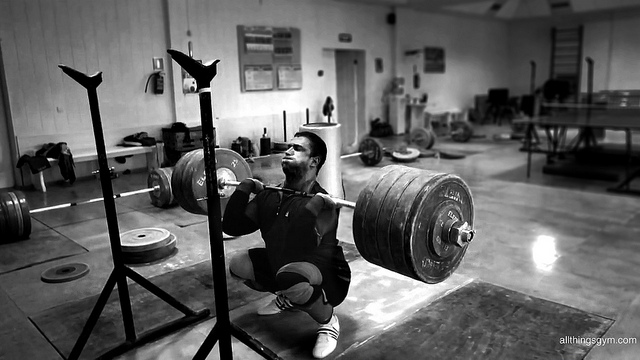
Lifting heavy weights is risky business. If you don’t know what you’re doing, you could encounter all kinds of problems. And even if you do know what you’re doing, you’re not necessarily off the hook either. You could pull, strain, or tear a muscle. You could tear cartilage or hyper-extend a joint. You could throw out your back, or any number of other things that will leave you hurt, injured, and feeling and performing lousy – or worse. And the heavier you go, the riskier it becomes.
Fortunately, there are many ways to mitigate the risks. And with the right combination of factors, you can all but eliminate them. In fact, that’s a cornerstone of health-first fitness – minimizing problems so that you can maximize your results over the long term. Because what good is it if you’re always experiencing setbacks and getting hurt?
So, here are 25 tips on how to lift heavy weights safely. Apply these to your own lifting and you’ll drastically reduce the risk of problems.
Think long-term. Do you want to be significantly better and stronger in a year or two? If so, you’ll have to train smart. So, forget about short-term, quick-fix programs that will get you a little stronger, but leave you beat up. Focus on long term progress and results, and you’ll get much further in the process.
Get good coaching. If you’ve never been taught how to lift weights by a professional (the big guy at your club doesn’t necessarily count), then chances are good that you have no idea what you’re doing and could use some instruction. There is proof of this at every single health club in the USA. This one tip will take care of the vast majority of problems you’d encounter otherwise. So, if you can, hire a coach. Or, join a club that includes hands-on instruction. Attend a workshop, if you get a chance. And if this just isn’t an option, at the very least, study proper weightlifting methods and take video of yourself performing to try and correct any problems you notice. It’ll go a long way to keep you healthy and injury-free.
Start very conservatively with load, training frequency, and volume. In the beginning, and whenever you learn a new lift, go lighter than you can – even starting with an empty bar or even a PVC pipe or wooden dowel, in some cases. Train less often, at a lower volume, and for less time than you think you can. Make sure you’re fully recovered by your next training session. And just between you and me, it pays off to start your introduction to strength training with calisthenics and other bodyweight training first – before moving on to free weights.
Use a suitable program for your skill and conditioning level. There are tons of great programs available out there. And you’ll want to make sure that you find just the right one that will cater to your goals. So, if you’re a beginner, then forget about using a pro weightlifters program that isn’t suited to your unique needs, goals, and circumstances. And don’t even think about “winging it” on your own. An individualized program is one of the bare necessities.
Progress very gradually. Add volume, increase load, and adjust training frequency in a very gradual manner. Don’t even think about adding 10+ pounds a week to your barbell lifts or 5+ pounds a week to your dumbbell lifts. Baby steps are the way to go.
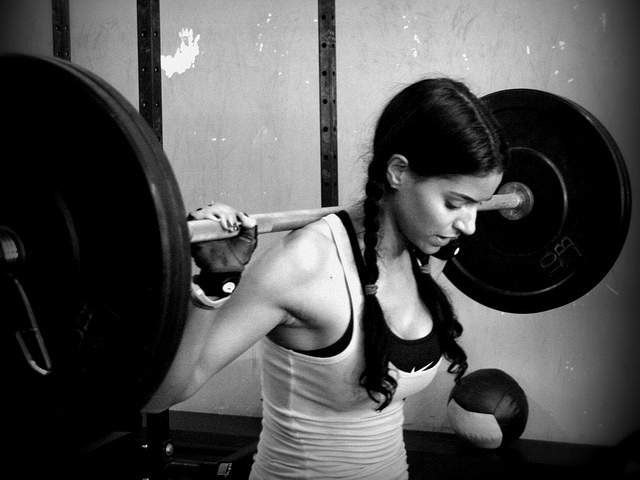
Back off when necessary. Take a rest week or a de-load week every 4-8 weeks. And if you’re seeing a pattern of diminishing returns, plateau, or you’re just not “feeling it” for an extended period of time, then take a break whenever necessary. Usually, you’ll come back stronger.
Never lift to or through pain. There’s a difference between pain and discomfort. A little discomfort due from high effort lifting is acceptable, but pain is a sign that something is wrong. So, if you experience it while lifting, stop doing whatever you’re doing. You may need to take a break from that specific exercise or choose another one that you can perform pain-free so that you can get whatever problem it is worked out.
Don’t train when you’re injured. In some cases, you can train around an injury. But in most cases, it’s not a good idea unless you’re under the direct supervision of a professional. So, get your injury healed so that you can get back to training as soon as possible.
Prioritize excellent lifting form at all times. For long term success, your technique while lifting is much more important than the effort you put into training. So, prioritize it accordingly. When necessary, maintain a neutral spine. Keep your core tight. Drive with your hips and legs. Whatever the specific lift requires, implement excellent technique every single repetition. And when you can no longer perform your reps with excellent technique…
Stop each set when your exercise technique breaks down. There are better ways to train to and through muscle failure. So, avoid training to technical failure, lest you start programming your body to use poor mechanics when lifting, which will only lead to problems down the road. If you want to do MORE work after reaching technical or muscle failure, then decrease the difficulty of the exercise so that you can do more work, but safely. You can do this by decreasing the load or using an easier variation of the exercise, among other things.
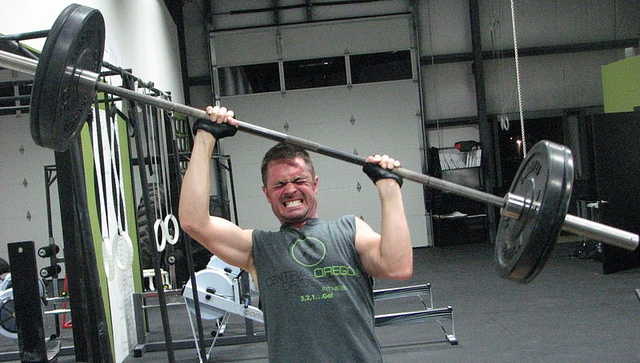
Relax your neck and face. Clenching your teeth, flexing your neck, and grimacing won’t help you squat or deadlift any better. In fact, these are a sign that you’re either doing something wrong (e.g. poor technique) or that you’re trying to do more than you can handle. So, if you find yourself doing this, address it accordingly.
Maintain good posture and keep your core tight when lifting. And if you can’t do this, then regress the exercise or load until you can. Regardless, study proper breathing and core activation technique to make sure that you keep yourself safe and apply the most amount of strength possible.
Use proper equipment (including safety equipment). If you have access to a lifting platform or squat rack, use it. If you don’t, use some saw horses if you have to. Use the collars with your barbell. Keep your lifting area clean and clear of unnecessary items. Wear proper clothing, especially footwear (if you’re not training barefoot). Test your equipment periodically. The last of your worries should be the possibility of an equipment malfunction or some other simple mistake. So, make sure your equipment and training area is safe and fully functional, and use caution whenever using homemade equipment.
Use a weightlifting belt, when necessary, but don’t rely on them. Your core should provide all the support you need for the vast majority of your lifting. But if you’re an advanced lifter and are going for a one-rep max with the very real possibility of getting crushed, then a proper weightlifting belt might be a good idea. Your coach will know what’s best.
Use a spotter if you’re unsure. Even the pros use spotters, and they eat and breathe weight lifting every single day. So, don’t be too proud to ask for a spot. Just make sure your spotter knows how to spot first.
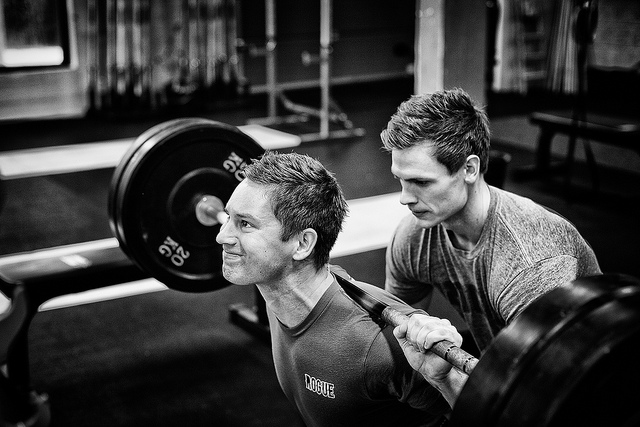
Learn how to safely miss a lift and dump a weight, if necessary. There may come a time when you need to dump a barbell, especially if it’s over your head. In the interest of your personal safety, it’s probably a good idea to know how to do this.
Don’t overspecialize in any one or two lifts at the expense of neglecting the others, especially over the long term. If you’re really good at squats, make sure you do some deadlifting, too (and vice versa). Focus on all of the main exercises, but also try out new exercises and/or new implements once in awhile (e.g. doing kettlebell swings along with your barbell cleans or cleaning a sandbag, etc). A little variety goes a long way.
Strengthen your weak points. Weak points often become problem areas. So, if you’re a master bench presser, but can’t do a single pull-up, prioritize accordingly.
Warm up properly. Believe it or not, this will go a long way to keeping you healthy and injury-free. So, if you feel like you don’t have enough time, then shorten your workout – not your warmup.
Improve your range of motion. If you can’t move through an exercise’s full range of motion without additional loading, then you shouldn’t be doing it with load – period. In my opinion, regular mobility training should be mandatory for all lifters. So, assess how important it is to include mobility training in your routine and prioritize it accordingly.
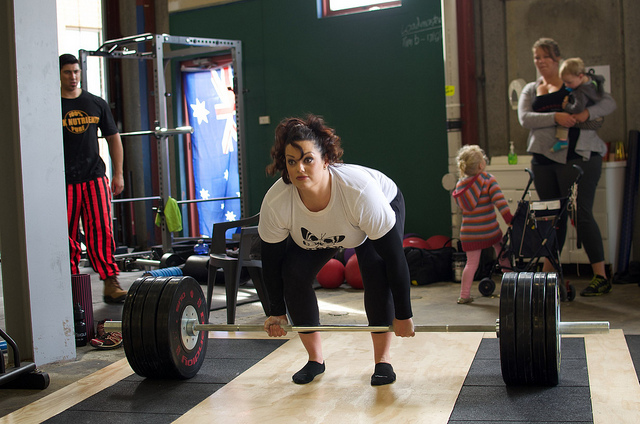
Visualize yourself performing each set and rep with impeccable form and minimal effort. Then act surprised when you set another PR.
Integrate your whole body into the lift instead of trying to isolate certain muscle groups. I don’t care if you’re doing wrist curls, your core should be engaged and you should be driving through your hips and legs. That’s how you’re going to handle the big weights – by integrating your entire body into the movement. But what on Earth are you doing wrist curls for?
Control your breathing. If you can’t control your breathing when executing a lift, that’s an indicator that you’re not in control. On the other hand, if you can control your breathing, then it’s a sign that your body can handle the load. So, let your breath be your guide, and make sure you learn to use it to your advantage. Believe it or not, but there is power in a belly full of air!
Grunting is okay. Heavy breathing, acceptable. Screaming? Not so much. Mmkay?
Do your due diligence with the other stuff that matters. Get plenty of sleep and recovery between sessions. Fuel yourself for success. Stay hydrated. Don’t train if you’re sick or wiped out. Take care of your joints. Loosen tight areas. You know the drill.
Wrap-up
It’s true that lifting weights can be dangerous. But with the proper approach, the risks can be minimized – making it a relatively safe activity, and certainly much safer than many other sports.
Unfortunately, your average gym-goer doesn’t apply most of these health-first strategies. There’s this idea that if you just workout, everything will work itself out and all your dreams will come true. But that’s usually not the case. And just between you and me, I’ve seen some things at the gym that would make even Arnold Schwarzenegger cringe.
But if you walk into a weightlifting club or any serious gym, for that matter – or if you study the strategies that most successful, long-term athletes use – you’ll find that most of them implement the stuff briefly outlined above. It’s because training smart works. And it pays off over the short and long term. Plus, you’ll get a lot further training this way than you would training recklessly.
And hey, last time I checked, being weak is a lot more dangerous than being strong. So, go ahead and pick that thing up. Just don’t give yourself a hernia.
Thanks for reading! If you enjoyed this article, please share it with your friends. I appreciate the support!
.jpg)
![]()
Health-First Fitness Coach
P.S. If you liked this post, then please signup for the newsletter, or follow me on Facebook or Twitter for daily updates and other interesting info.
P.P.S. It should go without saying that you should tell your doctor that you’ll be lifting extremely heavy weights like a boss, and make sure it’s okay for you to do that. Any questions, read the medical disclaimer. Mmkay?

Great list. I think I should print it and post it in the free weight room at the gym. There are alot of guys there that should read this.
Do you have a favorite resource online that shows in video and explains in text proper form? So many sources out there and I can tell not all of them are accurate or complete.
Here’s one I can think of: http://www.PhysicalLiving.com
;-)
There are lots of exercise how-to articles with video instruction in the archives.
Your article helped me a lot .. I was searching for some proper guide for weeks but only this helped me .
Thank you …